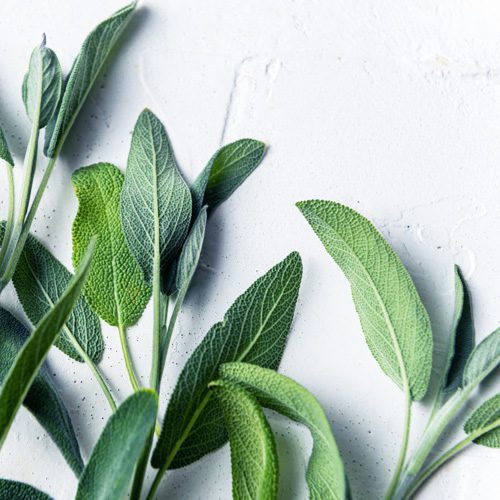Sage
Latin name: Salvia officinalis
🌱 Days to Sprout: 7-21
😋 Ready for Full Dose of plant food with true leaves or roots .5-inch long
✂️ Thin to: 3 plants per yCube
🍅 Days to Maturity: 80-90
💡 Light Zone: Medium
📏 Plant Size: <1 ft
💚 Care Level: Intermediate
Origin
Sage is native to the Mediterranean. Ancient Romans believed that Sage gave powerful healing properties and used it as medicine more often than as food.
Qualities
Sage has a complex flavor with notes of mint, pine, citrus, and earthiness. Its leaves are grey-green in color with a velvety feel when rubbed. Sage has many nutrients, including high levels of vitamin K that support healthy bones and blood, and high levels of antioxidants that fight damaging free radicals. It has also been shown to reduce blood sugar levels, and steeped sage can be used as skin toner.
Use
Sage makes a great rub for meats and a tasty seasoning for roasted root vegetables and pasta. Use it as a garnish for soups and sauces, or try it as an herbal tea.
Care & Harvest
✂️ Pruning: Remove leaves with brown spots if they appear. Check the roots monthly and trim any that are brown or extending past the yPod. While Sage is a slow-growing herb, it tends to grow tall, so don’t hesitate to prune the tops of stems to force it to grow more like a bush.
🔎 Plant Health: Sage has many common pests, but you can use our prevention and treatment tricks to keep pests at bay!
🌿 Harvest: To harvest, pinch off individual leaves or cut stems down to 4-6 inches tall. Full stems can be harvested and hung to dry for at least two weeks and can then be stored in an airtight container for later use.
Harvest To Plate Recipe
Grilled Fontina, Mushroom, and Sage Sandwiches
Recipe Source: Food and Wine
Ingredients
3 tablespoons butter, 2 melted
1/2 pound mushrooms, cut into thin slices
1/4 teaspoon salt
1/8 teaspoon fresh-ground black pepper
4 teaspoons chopped fresh sage, or 1 1/4 teaspoons dried sage
8 slices from a large round loaf of country-style bread, or other bread
1/2 pound fontina, grated (about 2 cups)
Instructions
In a large nonstick frying pan, heat 1 tablespoon of the butter over moderate heat. Add the mushrooms, salt, pepper, and sage, and cook, stirring frequently, until golden brown, about 5 minutes.
Move the mushroom mixture into a bowl.
Using a pastry brush, coat one side of 4 slices of the bread with half of the melted butter. Put them, buttered-side down, on a work surface.
Top the bread with the cheese and then the mushroom mixture. Cover with the remaining 4 slices of bread; brush the tops with the remaining melted butter.
Heat the frying pan over moderately low heat. Add the sandwiches and cook, turning once, until golden, about 2 minutes per side.
Our Plant Health & Nutrition Team thoroughly tests each variety we offer to bring you the most flavorful and high-quality plants. We regularly rotate our plant portfolio, so please note, availability varies.

